Santa Barbara’s Latino Music Scene
Mariachi, Banda, Jarocho, and More Played in Santa Barbara
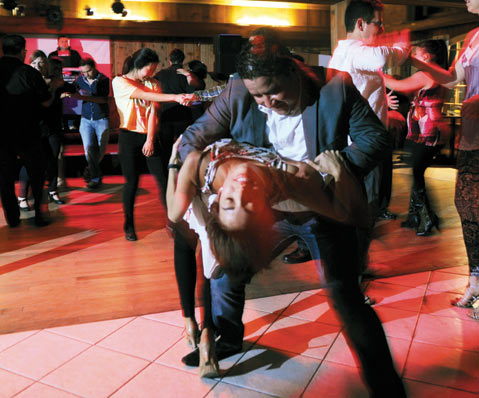
Bicycling home from a Lobero concert one night last fall, I heard the most astonishing music ricocheting around De la Guerra Plaza. A wild, haunting kind of music permeating the night air, it sounded as if it were coming from the now-defunct Tony Ray’s BBQ. Close to midnight, in the restaurant’s courtyard, I found a birthday celebration in full tilt. At the center of the party was a man blowing on an enormous sousaphone, surrounded by other musicians playing three trumpets, two clarinets, two trombones, two alto horns, a bass drum, and a snare, pumping out a frenzied music that was somehow celebratory and melancholy at the same time, like a marching band gone crazy. In one instant, the fleeting dreaminess of Fellini’s Roma and the jubilation of Mexico all came together in the heart of the city.
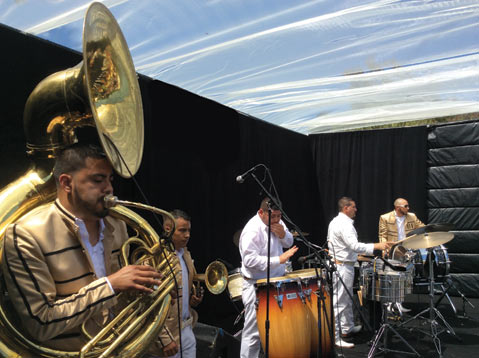
and private events all year long.
This, it turned out, was banda music. As a typical gringo, I had no idea how much Mexican and Latin music was being performed in Santa Barbara, let alone anything about the histories and diversity of the music. Banda, I discovered, is a style of Mexican music that developed in the Sinaloa Province in the 1800s, overlapping the influences of marching bands and German polka music and fused together in an exuberant Mexican style. Fellini’s favorite composer, Nino Rota, was influenced by the Italian version of these same sources.
Led by Necxtor Ramirez, Banda La Invasora, the band I saw that night, is the only banda Sinaloense group in Santa Barbara. Most of the band members have day jobs working in banking, construction, and factories. Almost all of them have older family members who grew up playing music in Mexican towns such as Jalisco, Guanajuato, and Oaxaca. Every few months, the group performs at Earl Warren Showground to huge, enthusiastic crowds, and almost every week, they play at all kinds of private events; parties, quinceañeras (the traditional Mexican equivalent of a sweet-16 party but for 15-year-olds), and bodas, or weddings. The only large gatherings where they don’t play are funerals because most of the band members can’t take off work during the weekday. Last February, they famously escorted a bride and groom down State Street, sousaphone, trombones, and all, to their wedding reception party.
I left Tony Ray’s, realizing that Mexican music was vastly more diverse and complex than the mariachi bands that are so plentiful at Fiesta. Unfortunately, Tony Ray’s has closed, and now, with few exceptions, Santa Barbara is sadly lacking in accessible public venues to witness the treasure of this music.
The irony is that we’re at a tipping point. There is, in fact, so much innovation and musicianship in Santa Barbara that we are on the verge of a true renaissance in Mexicana/Latino roots music. Throughout the wider SoCal area all the way down to the thriving music scene in Eastside L.A., there is a renewed respect for tradition and thirst for innovation. Just as the mandolin virtuoso Chris Thile’s Punch Brothers carried bluegrass into spontaneous new directions, musicians like Ozomatli, Las Cafeteras, Quetzal, La Santa Cecilia, Chicano Batman, and many others are transforming jarocho, cumbia, norteño, and even mariachi music into new and innovative forms.
Although there is no single narrative that applies to those who identify themselves as Hispanic or Mexican or Latino, one thing is clear: Music is a key component in their lives. In the generalized category of Hispanics, Nielsen’s recent Music 360 survey shows that the Latino population spends almost twice as much per year to see live music as other general audiences. They are fully wired online, sharing music through social media platforms far more than the average listener; and 59 percent self-identifying Hispanics are younger than 35. The sheer numbers in this audience group have begun to influence the Grammys and musical programming.
Most importantly, their musical taste is all-inclusive and integral to family life. “I come from a large family of 12 kids with 25 nieces and nephews,” a well-heeled Latina executive told me recently. “We have potlucks in my mom’s backyard with the age range from 3 to 85. In every part of the yard, there is a different music playing. Young kids and teenagers are listening to Taylor Swift and Bruno Mars; college kids are listening to Rihanna, Pitbull, and Maroon 5; couples are listening to Marc Anthony, Juanes, and Maná; and the oldest group is listening to mariachi, banda, or Antonio Aguilar — but everyone mingles in each group and sings along.”
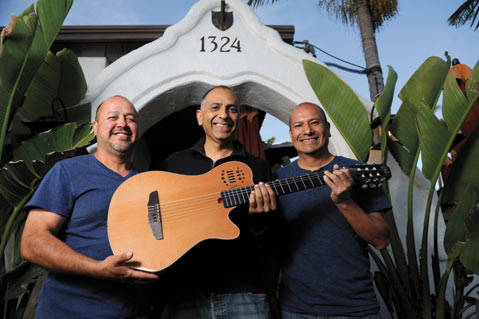
Despite the lack of public venues, homegrown Santa Barbara musicians are abundant. Tons of brilliant musicians are playing on every professional level. Now more than ever, it seems like a good time for the larger community to have the opportunity to see how much is going on.
No one is a better example of the breadth and reach of a Mexican musical upbringing than Miguel “Miguelito” León — the hometown prodigy. He was born and raised in Santa Barbara and started playing percussion at the age of one. By the time he was 3 years old, he was performing with Vientos del Sur at Carlitos almost every week. He met the famous Cuban drummer Luis Conte at an S.B.-area dancing-drum ensemble and became his student at 11. By 12, he was playing alongside Jack Johnson in front of an audience of more than 2,000 at the Heal the Ocean Festival in Santa Barbara. Today, he travels with his band Taraf de Locos (translated from the Romanian and Spanish as “band of crazies”), playing a world-music concoction of gypsy, cumbia, tajik music, Brazilian, and jazz. He also plays frequently with bassist Randy Tico, who, aside from organizing and playing at so many Santa Barbara festivals, has been a sideman with everyone from Jake Shimabukuro to Kenny Loggins, area Brazilian vocalist and guitarist Téka, and Jeff Bridges & The Abiders.
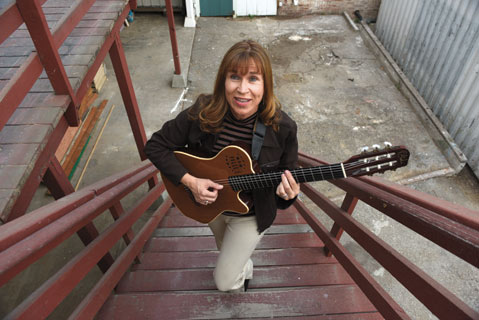
“There need to be more places besides SOhO and the Brasil Arts Café for artists playing different kinds of music to show their stuff,” León said. “For me, it’s a small scene with a lot of amazing diamonds hanging out in Santa Barbara.”
He cites the importance of the legendary Santa Barbara music store Folk Mote and its owners Cherie Chako and Nadine Bunn. “That place is amazing. It’s like stepping back in time to a magical, little, wondrous music store with the coolest instruments you can imagine. They have helped so many people with instruments and repairs. It’s where everybody goes.”
His prescription is a world ensemble festival that would be all inclusive of every kind of music. He’s eager for people to see past the obvious categories.
“You know there’s Mary-achi and Mariachi,” said León. “Unfortunately, most people in Santa Barbara know about the first and very little about the second. The difference is story, emotion, and soul.”
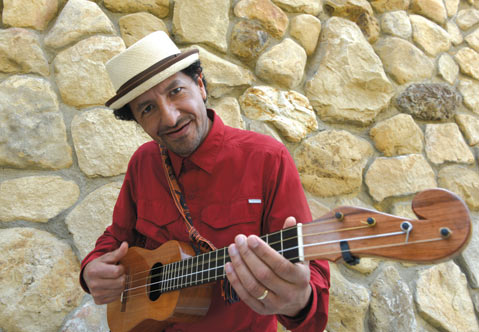
Jorge Mijangos, the ubiquitous son jarocho master, knows a lot about trying to spread the word. Jarocho is a sexy, rebellious improvisational music that originated in Veracruz among indigenous people and freed slaves. Mijangos is a smiling, quiet man with a strong, sinewy presence that explodes like a coiled spring when he plays. Bands that incorporate jarocho into their music, such as Las Cafeteras, invite Mijangos to play with them, as they did last October at the Bowl’s vibrant, second annual Día de los Muertos celebration. Mijangos, a tireless evangelist for his music, teaches in Ventura and Santa Barbara — currently running widely popular workshops at UCSB’s music department with Dr. Ruth Hellier-Tinoco.
Jarocho combines a hothouse fusion of ferocious Afro-Caribbean beats and Native American poetics with sexual double meanings. Most know the song “La Bamba” as a popular example of son jarocho that Ritchie Valens made into a hit in the ’50s, which Los Lobos revived in the ’80s and Las Cafeteras has recently recorded, enriching the jarocho classic with new politically topical lyrics in a hip-hop style with cumbia beats. Originating in the northern coast regions of Colombia, cumbia, with its heavily African-influenced beat, is the ultimate pan-Latin party music. It has spread like wildfire through all the Americas. Jarocho is another one of those infectious styles.
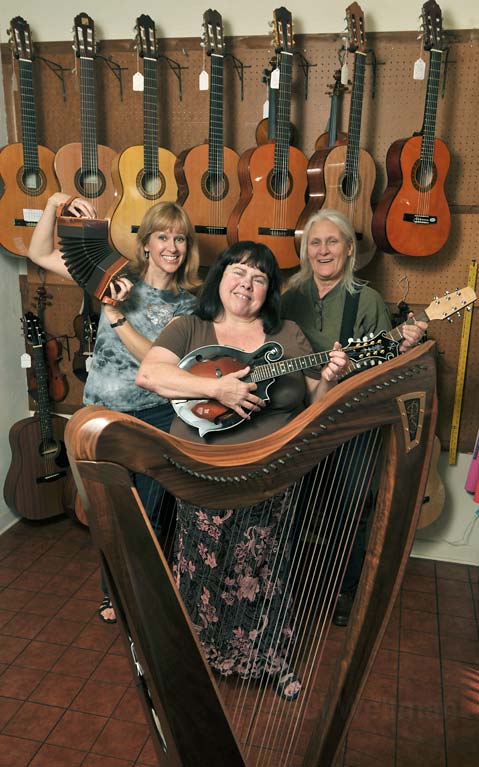
The music is also highly improvisational and welcoming to newbies and masters in jam sessions called fandangos. Forget going to the gym; jarocho is a workout for the mind, body, and soul. Son jarocho is the music after cumbia that has the greatest potential to transform popular music.
Mijangos also builds jaranas — Mexican guitars that, in supreme acts of craftsmanship, are carved from a single, solid block of hollowed-out wood. “The traditional, labor-intensive technique of jarana construction,” Mijangos explained, “is like a sculpture.” There were no stringed instruments in America when the Spanish arrived. “When the indigenous people heard these instruments with strings, they were enchanted and wanted to make their own,” Mijangos said. The Indian and mestizo musicians not only learned to play European instruments but also figured out how to build them, sometimes giving them shapes and creative tunings of their own invention.
For a number of years, Mijangos pulled together a very successful jarocho festival titled Encuentro de Son Jarocho, in the Casa de la Guerra courtyard, bringing jarocho artists from all over the world. Across the Santa Barbara area, ¡Viva el Arte de Santa Bárbara! and its funders are teaching and training new musicians in jarocho, and it seems the time may be near to bring the festival back.
Los Amos de Sinaloa, another Santa Barbara group, plays norteño music. The four young musicians are cousins who grew up in households with a tradition of playing music at home. They range in age from 14 to 21; the oldest is Cristian Soto, the accordion player, who is currently studying psychology at Cal State Channel Islands. He said he didn’t like Mexican music growing up. “Metallica got me really pumped up.”
Eventually, though, he chose norteño music because it goes back a lot of generations to his great-grandfather. “My great-grandfather had a piano accordion, the one with keys rather than buttons, and my father played, too. My father’s father wasn’t around for him, so his grandpa was his father figure, and the accordion has a lot of meaning in our family.”
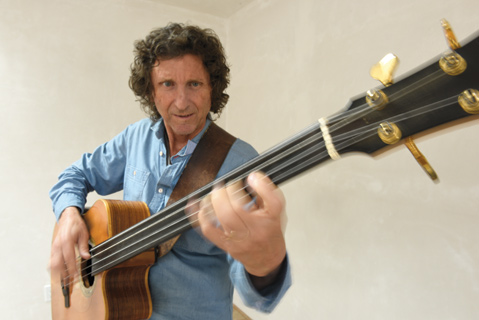
Soto remembers his early encounters with the music were not entirely pleasant. “On weekends my dad would wake me up in the mornings at 7 a.m., playing accordion. It was really loud and obnoxious. There was no escape. You’d hear it throughout the whole house.” Music was also a stress reliever, though. He remembers when he was 5 years old that his father and uncle who both worked two full-time jobs would come home around midnight, grab the accordion and a guitar, and play into the night. Despite his mother’s wishes, he would sneak out of his bedroom to hang out with the men.
Los Amos de Sinaloa plays dance music and corridos (or ballads), but Soto and his band members don’t hesitate to incorporate contemporary influences. “Norteño branches from the blues. When you think about it, the harmonica is practically a small accordion, and there are certain songs where we can incorporate that feeling.”
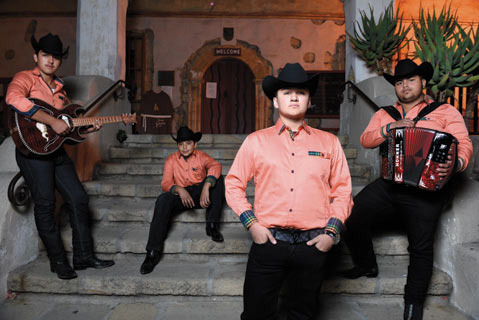
Up until recently, the Mariachi Festival during Fiesta (founded by Salud Carbajal, the 1st District county supervisor, and the late Al Pizano) was the most high-profile event for Mexican music in Santa Barbara. Mariachi began as a regional folk-style in the Mexican state of Jalisco but has undergone a number of changes since its origin. Initially, there were no trumpets, the musicians wore everyday clothes, and they played only string instruments, mostly violins, harps, and a few guitars.
Sometime around the 1930s and 1940s, during the Golden Age of Mexican cinema, the mariachi tradition was married to the image of the charro, or Mexican cowboy. These movies created many of the traditions and clichés of today’s mariachi dress and style, which were parodied to great success in Robert Rodriguez’s film El Mariachi, featuring a guitarist for hire with a guitar case full of guns.
“For Mexicans, mariachi is a foundational music,” Carbajal said. “It’s an intergenerational music that everybody has heard at a baptism or another important event.” The festival was started to introduce the music to the larger community and promote Mexican culture, especially during Fiesta with its emphasis on “Spanish Days.” It also raised money for college scholarships. More than $750,000 has been given out in the 20 years of the festival.
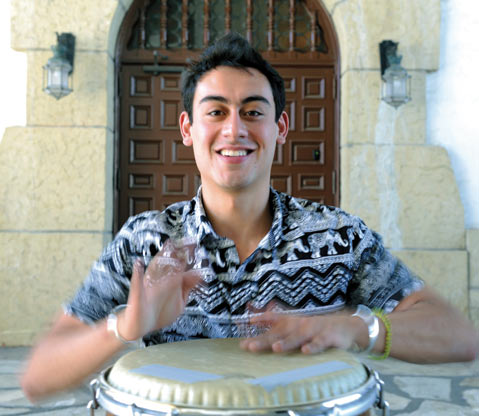
Meanwhile, innovation and change has reached mariachi, as well. One of the stranger juxtapositions can be found at Del Pueblo Café in the Magnolia Shopping Center, on May 15, where you can hear the touring band Mariachi Manchester play a tribute to Morrissey, the singer for The Smiths. It’s a surprising link mined by a number of other mariachi groups.
The issue of musical venues seems to be the only factor keeping the Mexicana-roots revolution from realizing its creative potential. Clearly, the audience is there. Of course the lack of venues is the greatest problem for all musicians in Santa Barbara, regardless of ethnicity or musical style, but it is particularly acute for Latino musicians.
One sign that the creative appeal of this renaissance is having an economic impact is that concert promoters are beginning to pay attention. This year’s Santa Barbara Bowl schedule includes several big-name Latino stars including Juanes, Colombia’s cumbia superstar.
Perhaps more significant has been the success of the Día de Los Muertos concert and celebration at the Santa Barbara Bowl. As just about any Latino music enthusiast will tell you, Fiesta’s Old Spanish Days and Cinco de Mayo festivals are primarily North American holidays. They are all greatly entertaining, and everyone comes out to have a good time, but there is very little historical veracity to them.
Día de los Muertos (Day of the Dead), however, is historically a profound and authentic celebration, so it’s been good to see that Moss Jacobs, longtime music promoter and VP of Nederlander Concerts, has stepped forward to actively develop the holiday as a time for music, art, and dance. In each of its two years, the event has grown in size and drama, bringing great musicians to the stage and turning the Bowl grove into a festival of art and music for the whole Santa Barbara community. Jacobs, with the full support of the Bowl management, is planning on enlarging it even more this October.
“I’m a big believer that the music being performed in our town needs to be representative of our society,” Jacobs said. Teaming up with his longtime friend and former Santa Barbara resident Nicole Pierpont, herself raised in Central America by an El Salvadorian mom and a Mexican American Dad, the Bowl plans to bring in more artists and musicians from the community. “We just get off on the diversity of it all, especially in a town with such distinct borders,” Jacobs added.
Now if we could just add Encuentro de Son Jarocho and the world ensemble festival, it would all be happening here.
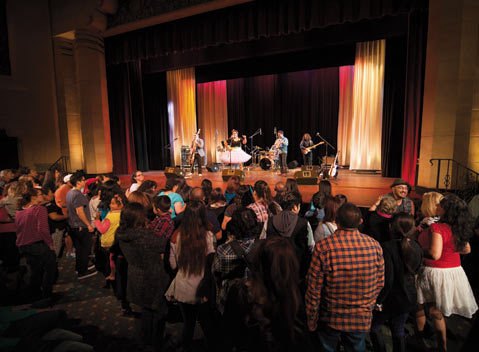
Small and Large Venues in S.B. for Latino Music
Carlitos Café y Cantina
1324 State St. carlitos.com.
Ensamble Vientos del Sur.
Carrillo Recreation Center
100 E. Carrillo St.
santabarbaraca.gov/gov/depts/parksrec/venues/carrillo.asp.
La Casa de la Raza
601 E. Montecito St. lacasadelaraza.org.
See calendar for events.
Casa Dolores
1023 Bath St.
casadolores.org/contact-and-hours.html.
Participated in Día de los Muertos at the Santa Barbara Bowl, honoring the memory of Mexican musicians past: Jenni Rivera, Selena, Pedro Infante, and Antonio Aguilar.
Chumash Casino
3400 E. Hwy. 246, Santa Ynez. chumashcasino.com.
Regularly features Mexican and Chicano music.
Mariachi Vargas de Tecalitlán: May 7
Tierra: June 25.

Del Pueblo Café
Magnolia Shopping Ctr., 5134 Hollister Ave. delpueblocafe.biz/los-eventos.html.
Occasional shows. There will be an upcoming show of the very popular Mariachi Manchester playing Morrissey songs May 15.
Son del Centro and La Santa Cecilia have played here a few times in the past.
Earl Warren Showgrounds
3400 Calle Real. earlwarren.com.
See listings for events.
Guadalupe City Hall
918 Obispo St., Guadalupe.
Isla Vista School
6875 El Colegio Rd., Goleta. islavista.goleta.k12.ca.us.
Marjorie Luke Theatre
Santa Barbara Junior High School, 721 E. Cota St. luketheatre.org.
Hosts shows through ¡Viva el Arte de Santa Bárbara!
Quetzalcoatl: Sat., Oct. 10.
Our Lady of Guadalupe Parish
227 N. Nopal St.
Hosts Mexican and Fiesta events including music by Los Tigres del Norte.
Palapas Fine Mexican Food
4123 State St. palaparestaurant.com/friday-night-mariachi-band.
Mariachi band every Friday night at 6:30pm.
Ruby’s Nightclub
348 S. Oxnard Blvd. rubyscafeoxnard.com.
See listings for events.
La Rumba Bar & Grill
San Roque Plaza, 3435 State St. facebook.com/pages/La-Rumba/107587129298537?sk=photos_stream.
See listings for events.
Ruth Hellier-Tinoco’s workshops with Jorge Mijangos at UCSB
Music Department’s Geiringer Hall,
1250 Music Bldg., UCSB.
www.news.ucsb.edu/2015/015295/son-jarocho-music-workshop.
The 40-minute workshop is held Wednesdays at 11:50am. It will culminate in a free concert at noon on Wed., May 20, in the campus’s Music Bowl.
Santa Barbara Bowl
1122 N. Milpas St., sbbowl.com.
Juanes: Aug. 7… and others.
Hosts Día de los Muertos celebration and mariachi festivals.
UCSB MultiCultural Center (MCC)
University Ctr., Rm. 1504, UCSB.
Hosts events in the MCC Theater on campus and helps co-fund other campus appearances and shows at outside venues in Isla Vista and Santa Barbara (Coffee Cat, Muddy Waters Café, and more). In May, they’ll host a lecture on Selena and various Mexican and Mexican American bands and folkloric dance acts on an occasional basis.
UCSB Music Bowl
Music Department buildings, UCSB.
music.ucsb.edu/about/facilites/music-bowl.
A small outdoor amphitheater that hosts world music every week. Mariachi bands perform there several times a year.
¡Viva el Arte de Santa Bárbara!
Various locations.



